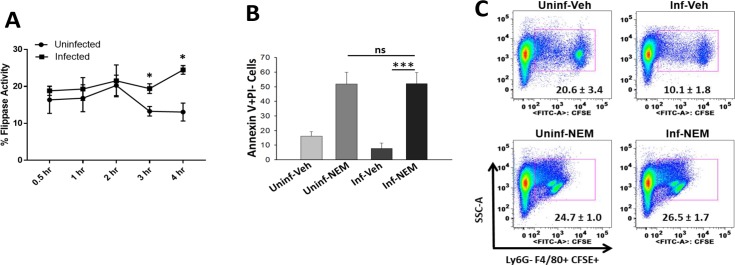Fig 3. Inhibition of Flippase activity by N-ethylmaleimide (NEM) treatment rescues surface exposed “eat me” signal PS in KPn infected cells and restores efferocytosis.
(A). KPn infection increases flippase activity in neutrophils. Flippase activity in uninfected and KPn infected neutrophils was calculated at indicated time points using NBD-PS fluorescence before and after exofacial bleaching with sodium dithionite treatment as described in methods. Data shown is mean ± SEM from 3 independent experiments. Student’s t test was used for two group comparisons. (*p<0.05). (B). The level of surface exposed PS in uninfected or KPn infected neutrophils with or without NEM treatment (5mM for 30 min) was measured by Annexin V staining followed by flow cytometry. Percent of Annexin V+ PI- cells at 3 hrs post-infection is shown (mean ± SEM from 3 independent experiments. Non-parametric ANOVA with Dunn’s post hoc test was used for statistical analysis (***, p<0.001). (C) Uninfected and KPn infected neutrophils were treated with vehicle (ultrapure water) or NEM (5mM for 30 min) as described in Methods, followed by in-vitro efferocytosis. Flow cytometry was performed to enumerate percent of Ly6G- F4/80+ CFSE+ efferocytic cells. Representative dot plots from one experiment out of 3 independent experiments is shown. The numbers on dot plots are mean ± SEM from 3 independent experiments with 3–4 replicates per experiment for each sample. No statistically significant difference was found between efferocytosis of uninfected and KPn infected neutrophils upon NEM treatment. Uninf; Uninfected, Inf; KPn infected, Veh; Vehicle, NEM; N-ethylmaleimide.

